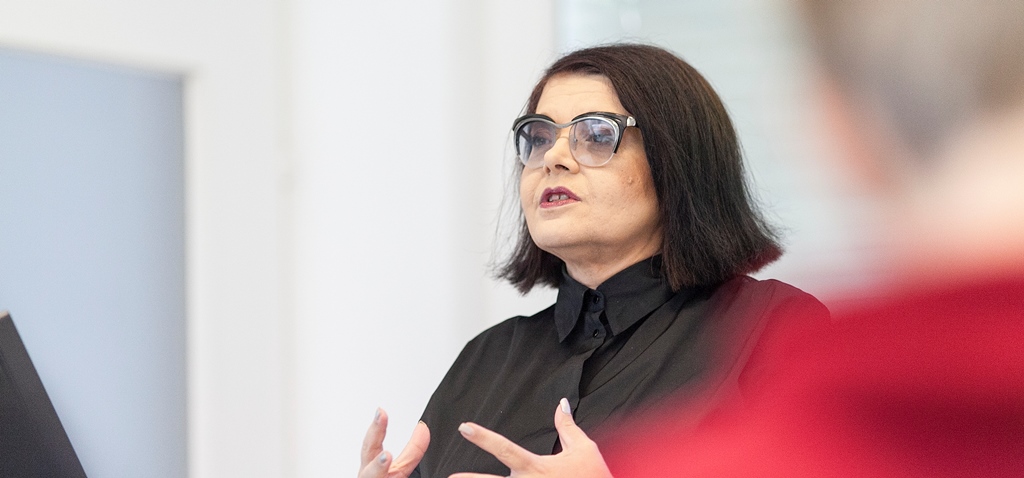„Infelicitous“ Participatory Acts on the Neoliberal Stage
Participatory art’s promises and hopes for democratization of society
In an earlier text, “Participatory Art: A Paradigm Shift from Objects to Subjects” published in 2006, I addressed the paradigm shift from establishing relations between art objects and audiences to establishing relations between subjects (Milevska 2006), *1 *(1) a shift that was also discussed under the notion of “relational aesthetics” (Bourriaud 2002: 9).  (*1) It should be noted that although similar shifts towards interaction between artists and audiences already took place in the 1960s, 1970s, and 1980s, the term “participatory” focuses more directly on the subjects involved (Fontaine 2012).
(*1) It should be noted that although similar shifts towards interaction between artists and audiences already took place in the 1960s, 1970s, and 1980s, the term “participatory” focuses more directly on the subjects involved (Fontaine 2012). (*2) In this text, apart from looking at different types of participatory art and what they promise, I address different social limitations that hinder contemporary participatory art projects from fulfilling their potential.
(*2) In this text, apart from looking at different types of participatory art and what they promise, I address different social limitations that hinder contemporary participatory art projects from fulfilling their potential.
Revisiting the fulfillment of participatory art’s promises
Artists who initiate interactions with voluntary (and in some cases paid) participants in a variety of events and actions in the art context or in the public realm have developed different strategies. My aim in this text is to discuss the potentials and limitations of such strategies for social change and democratization. While the emphasis in relational aesthetics still rested predominantly on the evaluation of the active relationship between the audience and an artistic object (in contrast to the traditionally conceived passive reception of art), more recent participatory practices have shifted the focus of art discourse in yet another direction and called for other evaluation criteria. With the exception of artists who, although still listed as “relational,” use objects, such as ready-mades, for mediation of different concepts of participation,*2 *(2) the newly proposed criteria do not necessarily link art production to aesthetic enjoyment and art objects.*3 *(3)
Although I still find the shift towards participation relevant, in the ten years since I published my earlier text, the field of participatory art and the discourse on it has developed rapidly, and the overall influence of neoliberal politics on the cultural field has also changed. Therefore, I argue that today it is necessary to revisit participatory art and to reevaluate the extent to which it can and has fulfilled its main promises (Colouring in culture 2015).
Two types of participatory art practices
Many of the initial promises of participatory art and the high expectations connected to it seem overrated today, for example, its aim to erase the clear-cut and hierarchical division between artists (interpreted as experts and essential for the creation of the work) and audience members (interpreted as passive observers). Particularly relevant, but also difficult to evaluate is the aim of striving for democratic changes in society. This claim is saturated with authoritarian governance practices perpetuating inequality and hierarchies. Democratic changes were meant to be brought about through inclusion of diverse audiences previously not interested in art (the issue of “outreach”). However, such audiences’ lack of interest stems precisely from art’s elitist and intimidating social construction, which can’t be overcome by individual projects. Also difficult to evaluate is participatory projects’ aim of revealing social injustice within cultural, social, and political structures.
In this respect, the question posed by Giorgio Agamben with regard to World War II concentration camps of what type of “juridical structure [is present] that such events could take place there?” (Agamben 1998: 166) (*5) is among the key questions asked by artistic practices with reference to injustices present in contemporary society. Albeit the question is merely rhetorical as artists hope to raise awareness of specific social injustices rather than bring about substantial changes. However, the question of whether art truly possesses such potential is currently more relevant than ever before and begs clearer articulation, as “participatory art” has become too general a term.
(*5) is among the key questions asked by artistic practices with reference to injustices present in contemporary society. Albeit the question is merely rhetorical as artists hope to raise awareness of specific social injustices rather than bring about substantial changes. However, the question of whether art truly possesses such potential is currently more relevant than ever before and begs clearer articulation, as “participatory art” has become too general a term.
Suzana Milevska ( 2016): „Infelicitous“ Participatory Acts on the Neoliberal Stage. Participatory art’s promises and hopes for democratization of society. In: p/art/icipate – Kultur aktiv gestalten # 07 , https://www.p-art-icipate.net/infelicitous-participatory-acts-on-the-neoliberal-stage/



 Artikel drucken
Artikel drucken